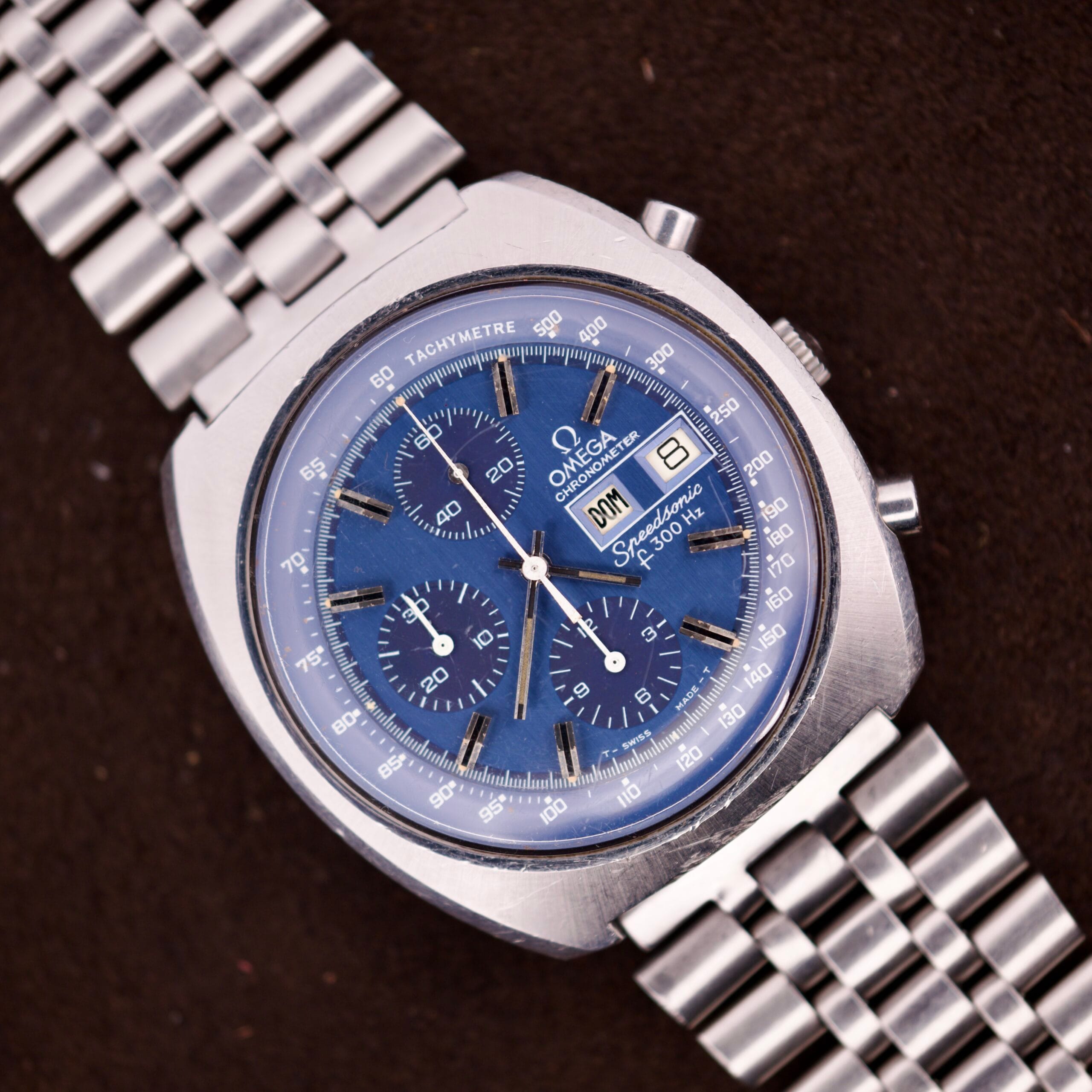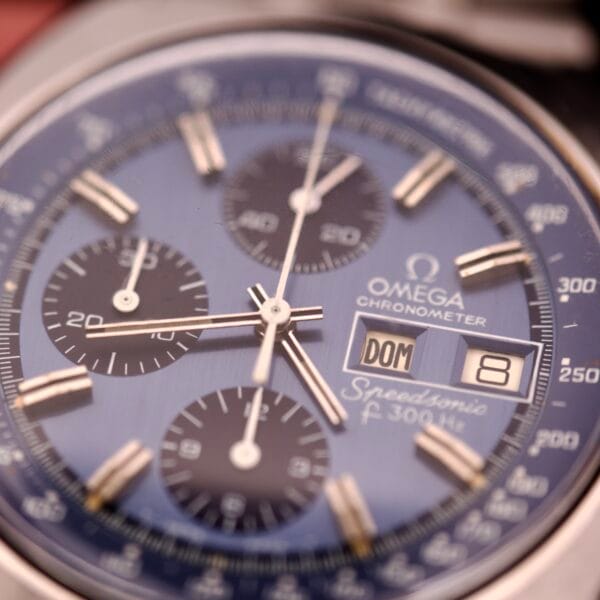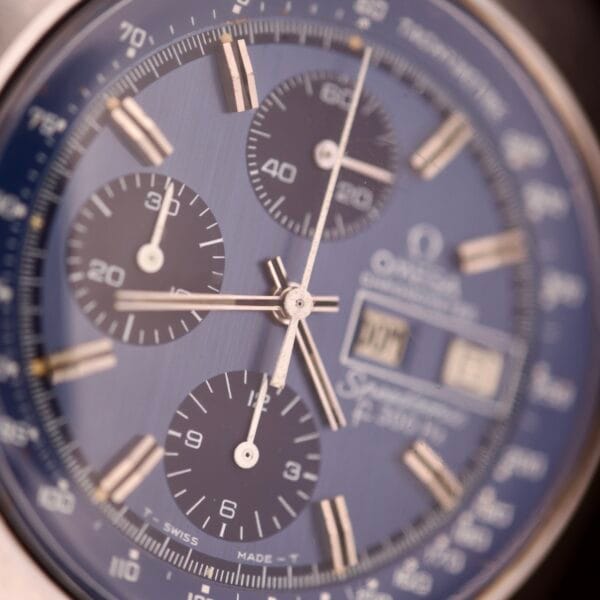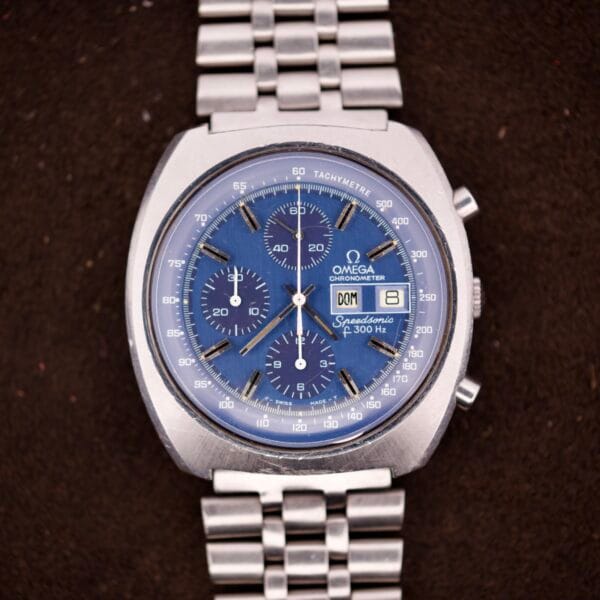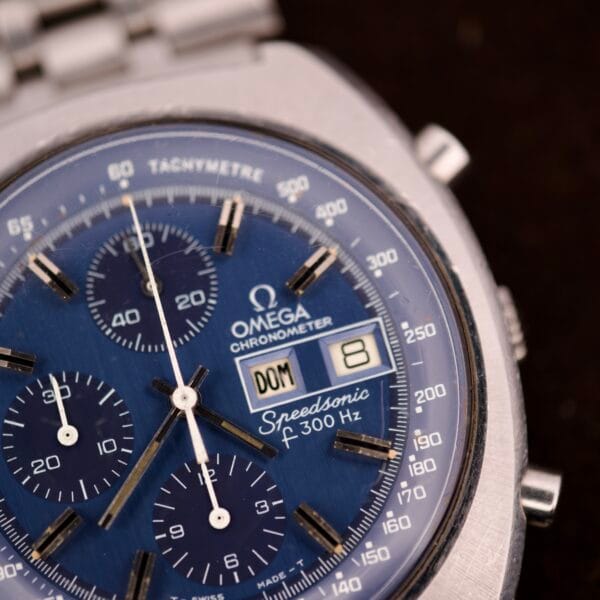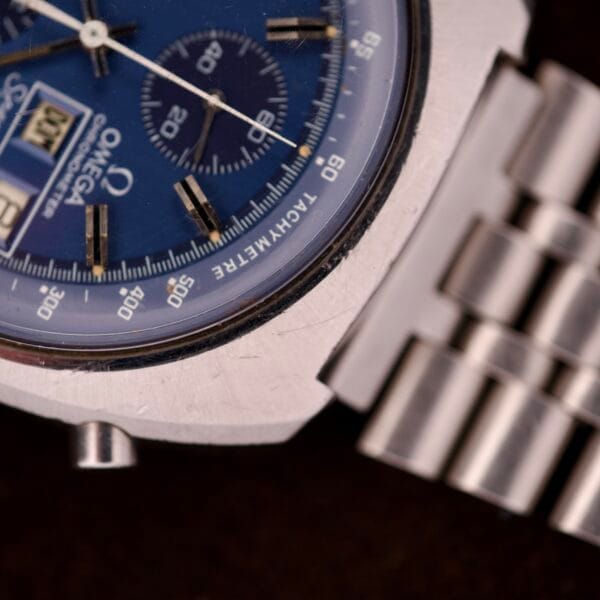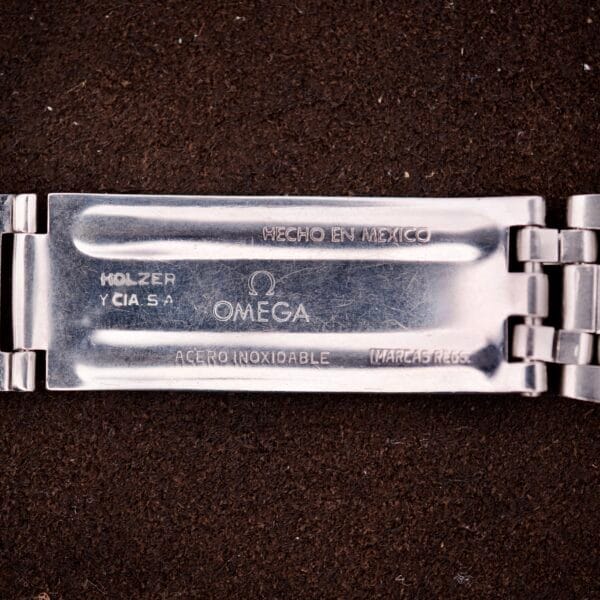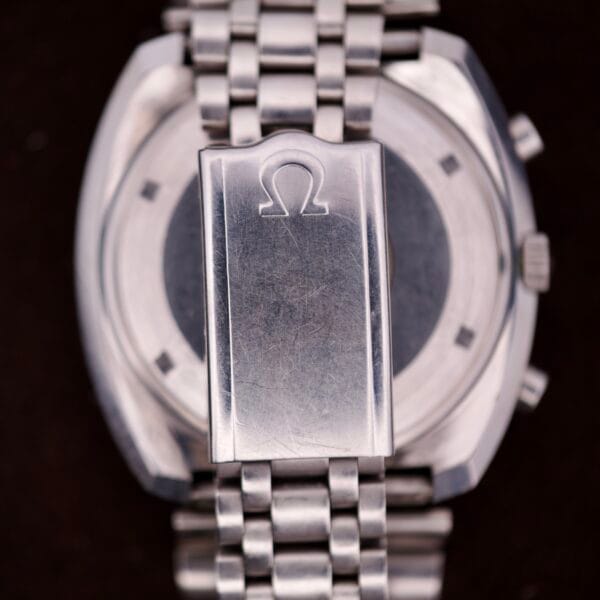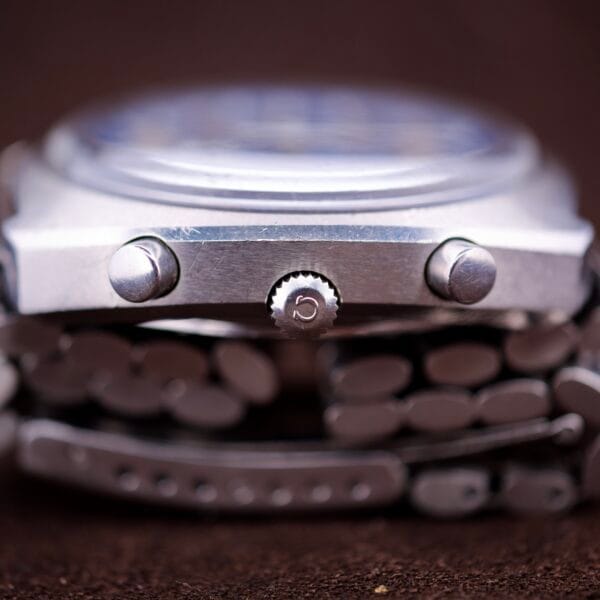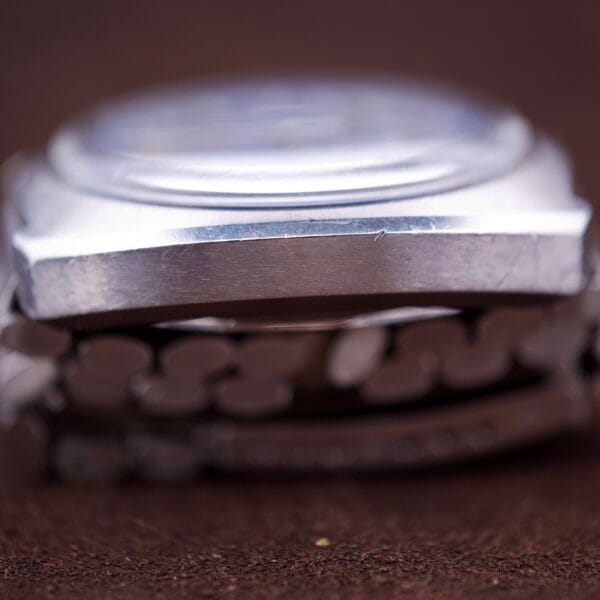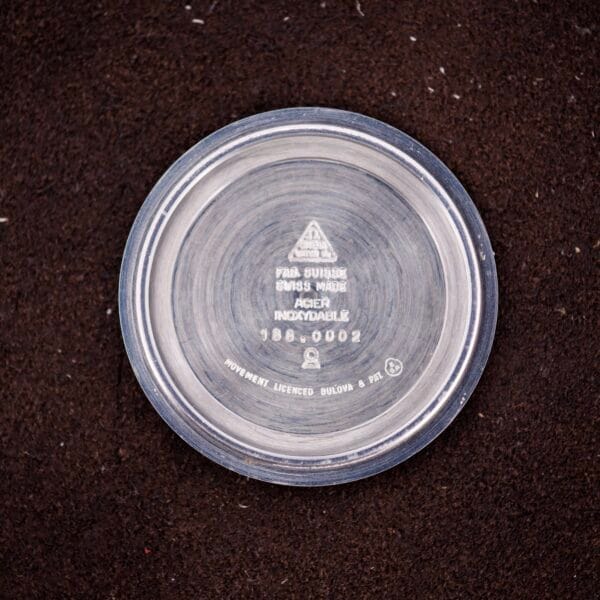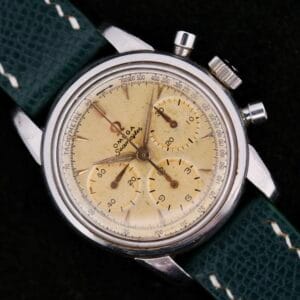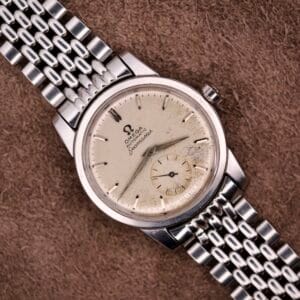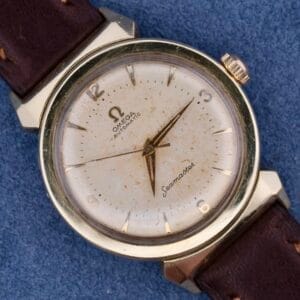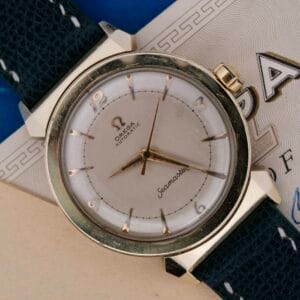Don't miss the next drop
If you hold this watch to your ear, it doesn’t tick, it hums. In the lexicon of 1970s horology, the Omega Speedsonic f300Hz occupies a wildly cool, albeit brief, chapter known as the “tuning fork” era. Before quartz fully conquered the mechanical world, there was this: the electronic tuning fork movement. The Speedsonic is particularly legendary because it houses the Caliber 1255 (based on the ESA 9210), which is arguably the most complex tuning fork caliber ever made. It was the world’s first electronic chronograph and, to this day, remains the only chronometer-certified tuning fork chronograph ever produced. It represents a “what could have been” moment in history, a bridge between traditional mechanics and the digital age, offering accuracy that rivaled quartz but with a soul that is entirely its own.
The design of the Reference 188.0002 is pure 1970s funk, yet it retains a surprising amount of elegance. The “TV” or cushion-shaped case is substantial, offering a wrist presence that feels modern even by today’s standards. But the real star here is the technology. The movement relies on two tiny tuning forks vibrating at 300 times per second to drive the geartrain, resulting in a seconds hand that glides with a smoothness that even the finest mechanical movements cannot replicate. It is a mesmerizing piece of micro-engineering that required a level of precision manufacturing that eventually became too expensive to sustain, making these survivors incredibly special to collectors.
This particular example is a treasure trove of specific regional provenance. The dial is a stunning matte blue, a less common configuration that pairs beautifully with the white handset and indices. The day wheel is printed in Spanish (“DOM” for Domingo), which offers the first clue to its origin. However, the true “insider” detail lies in the bracelet. The clasp is stamped “Hecho en Mexico” and “Holzer y Cia.” Holzer was Omega’s official manufacturing partner in Mexico, producing cases and bracelets locally to circumvent high import tariffs in the mid-20th century. Finding a Speedsonic on its original Mexican-market Holzer jubilee bracelet is a rare treat that adds a distinct layer of history to the piece, separating it from the standard Swiss-market production models.
Condition-wise, this Speedsonic is an honest, untreated survivor. The stainless steel case and bracelet show the scratches, dings, and signs of wear one would expect from a watch that was worn and enjoyed for decades rather than kept in a safe. We have chosen not to polish it, preserving the sharp factory lines of the cushion case. The mineral crystal exhibits some scratching, which is typical for this reference, but the dial underneath remains vibrant and clean, with the tritium lume plots having aged to a dark, earthy tone. The movement, visible in the caseback shots, is clean and retains the distinct copper-colored finish of these tuning fork calibers.

